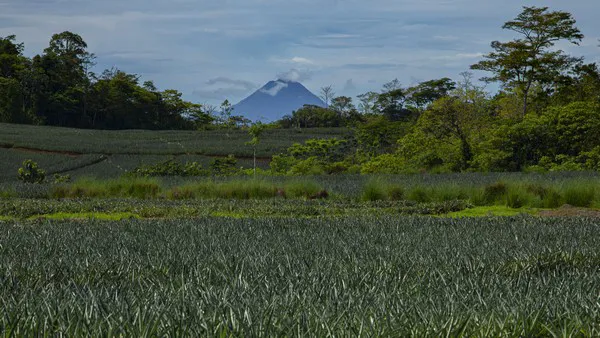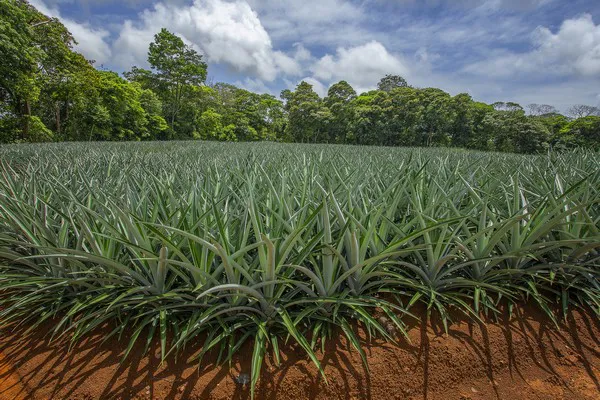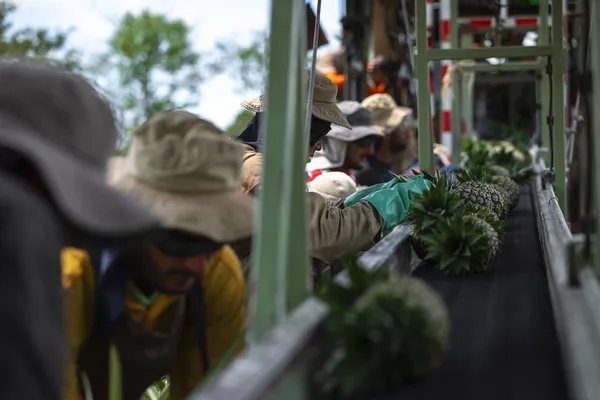The National Chamber of Pineapple Producers and Exporters of Costa Rica, CANAPEP, celebrated its 20th anniversary last March. During all that time, the Chamber has stood next to and promoted a sector that has become the world leader in fresh pineapple exports. The country started exporting pineapples in 1986, but it was not until 2001 when Costa Rica became the leading fresh pineapple exporter worldwide with the variety known as MD2, or Golden, with the U.S. and the EU as its main markets. Currently, Costa Rican pineapples are exported to 50 destinations. Since March 2003 (the year CANAPEP was created), the organization has been working to support producers, industrializers and exporters, mainly on environmental and social issues.

"As far as exports are concerned, we continue to handle about 170-180 million boxes in a year. Of these, the country ships 52% to North America and 43% to Europe. The remaining 5% goes to other smaller destinations in South America, Asia and the Caribbean islands. This gives us an idea of the number of destinations that Costa Rican pineapples have," says Abel Chaves, president of CANAPEP.
In 2023, the production volumes have tended to remain stable, according to CANAPEP data. In 2022, the sector exported close to 2.5 million tons, despite the issues that arose as a result of the shortage of containers, as well as the Ukraine-Russia war conflict, which caused inordinate increases in the costs of fertilizers and agrochemicals used in pineapple production. In one way or another, this may all lead to reductions in the production in 2023.
"We have the responsibility of delivering a top quality pineapple to the consumer; one that isn't just nutritious, juicy and with a good aroma, but which is also produced in compliance with the country's social, environmental and legal regulations," says Chaves.

CANAPEP has continued working on improvement programs for its members, keeping the Socio-environmental Commission for Sustainable Pineapple Production (COSAP) and the Technical Manual of Good Practices for Pineapple Production (MT-PSP) up to date and in force. Moreover, after meeting the requirements of the Costa Rican Accreditation Body (ECA), CANAPEP was accredited as an Inspection Body (CANAPEP-OI) under the INTEC-ISO/IEC 17020:2020 standard, making it the only business organization in the country to have such accreditation.
CANAPEP has also continued working on the Life Cycle Analysis for Pineapple (ACVP) process, which involves its affiliates analyzing 14 environmental footprints, namely: climate change, ozone depletion, ecotoxicity to freshwater aquatic organisms, toxicity for humans with carcinogenic effects, aquatic eutrophication, toxicity for humans without carcinogenic effects, particulate matter, ionizing radiation, photochemical ozone formation, terrestrial eutrophication, acidification, water depletion, mineral and fossil depletion, and land use.
Lastly, and as a complement to everything mentioned here, the Chamber has looked into the "alignment" of the concepts in its Technical Manual (MT-PSP) with the 17 United Nations Sustainable Development Goals (SDGs), identifying alignment with 15 of the 17 SDGs. There is alignment under technical and scientific concepts.

This means that CANAPEP's Technical Manual complies with 88% of the statements of the 17 SDGs, and CANAPEP is the only business chamber to achieve such an alignment. This fits in with many of the initiatives carried out to tackle climate change. In addition to these advances, pineapple production in Costa Rica has entered a new technological era by implementing advances in precision agriculture, seeking to improve efficiency in planting, soil control, fertilization and the application of phytosanitary products through the automatic use of tractors with GPS and drones. This is making it possible to calculate yields, analyze plant stress levels and treat pests and weeds, which puts Costa Rica at the forefront when it comes to taking advantage of scientific advances to improve the way pineapples are produced.
"We generate employment and fulfill an important social duty. Despite the country being territorialy small and with various microclimates, there are currently 43,000 hectares devoted to the crop's production. The activity generates 30,100 direct jobs and 120,000 indirect jobs. Also, pineapple production in Costa Rica is an activity that yields an added value of 40% and is an engine of the economy, as it contributes 1.82% of the country's GDP, and 30% of the agricultural GDP. Pineapple, along with bananas and coffee, has become part of Costa Rica's agricultural export trident," said Abel Chaves, president of CANAPEP.
 For more information:
For more information:
CANAPEP
San José, Costa Rica
Apartado 585-1007
Tel.: +506 2291-5237
info@canapep.com
https://canapep.com
